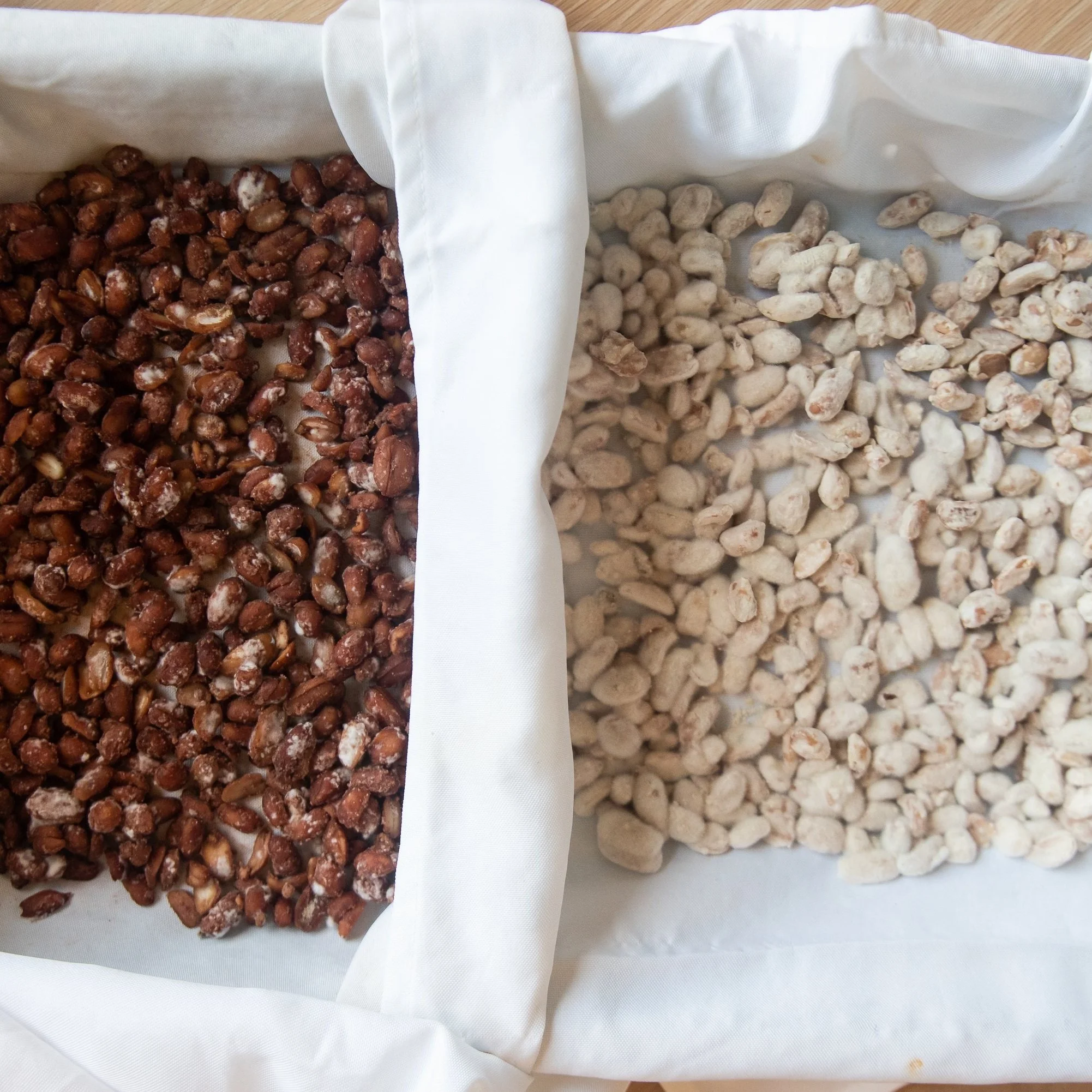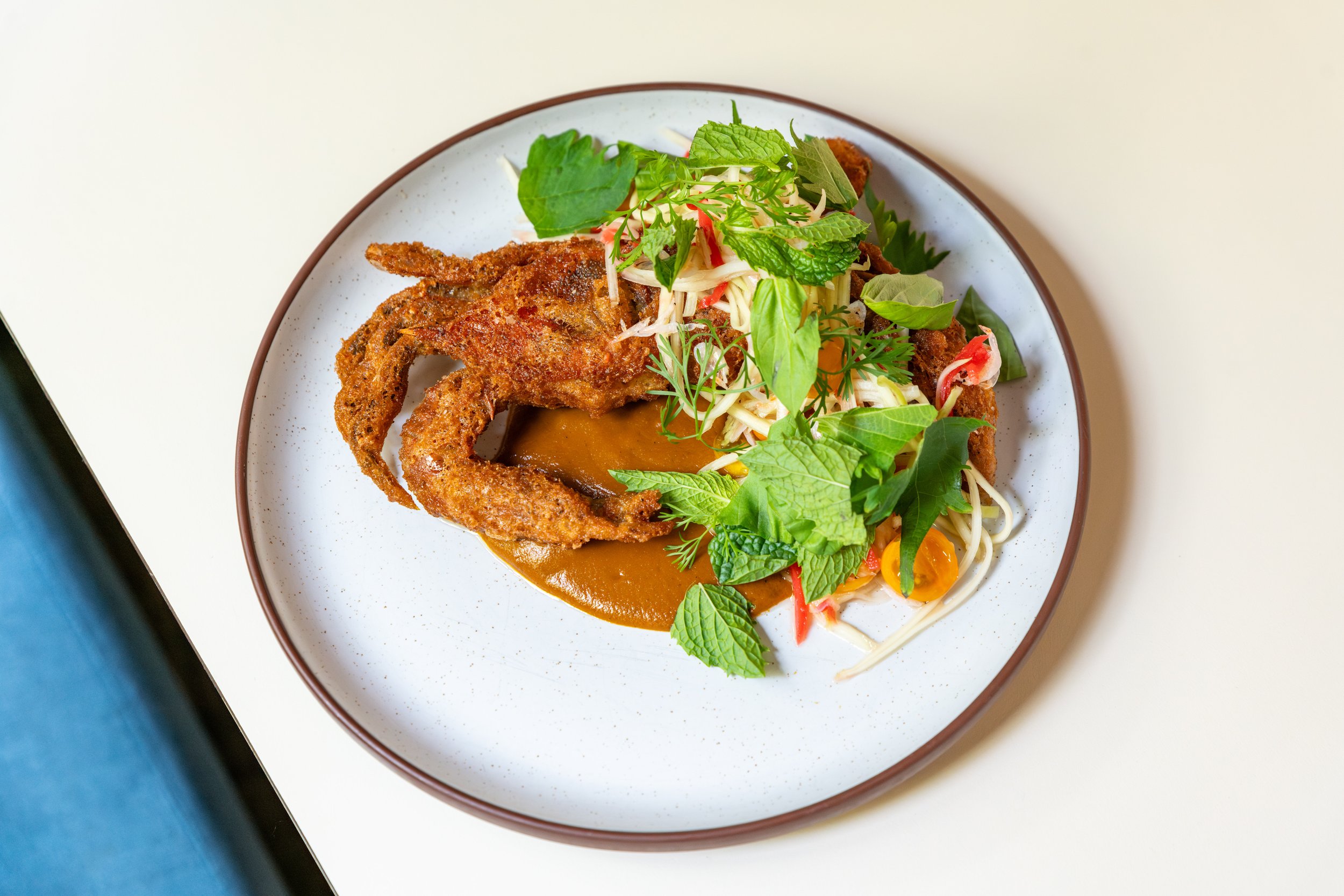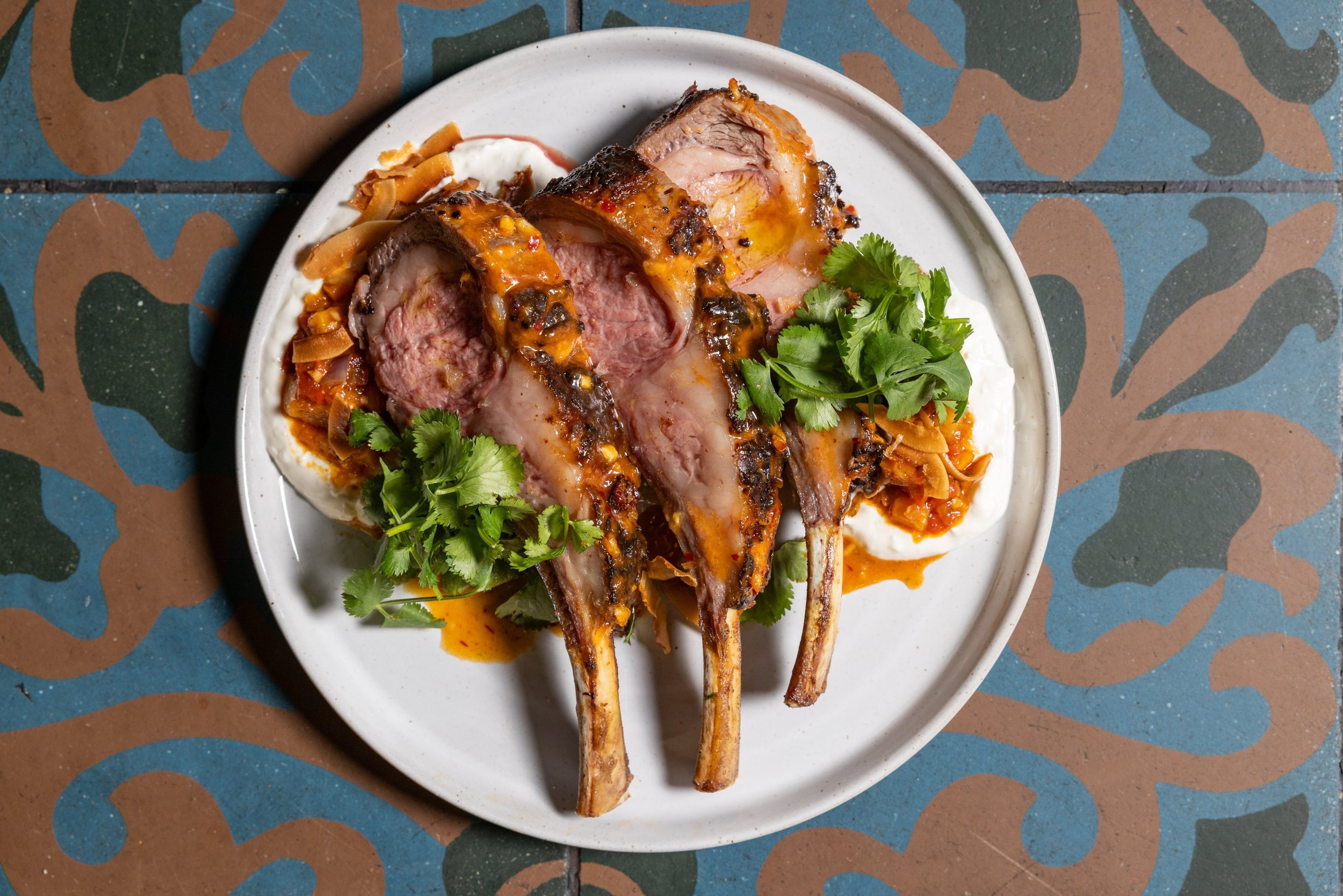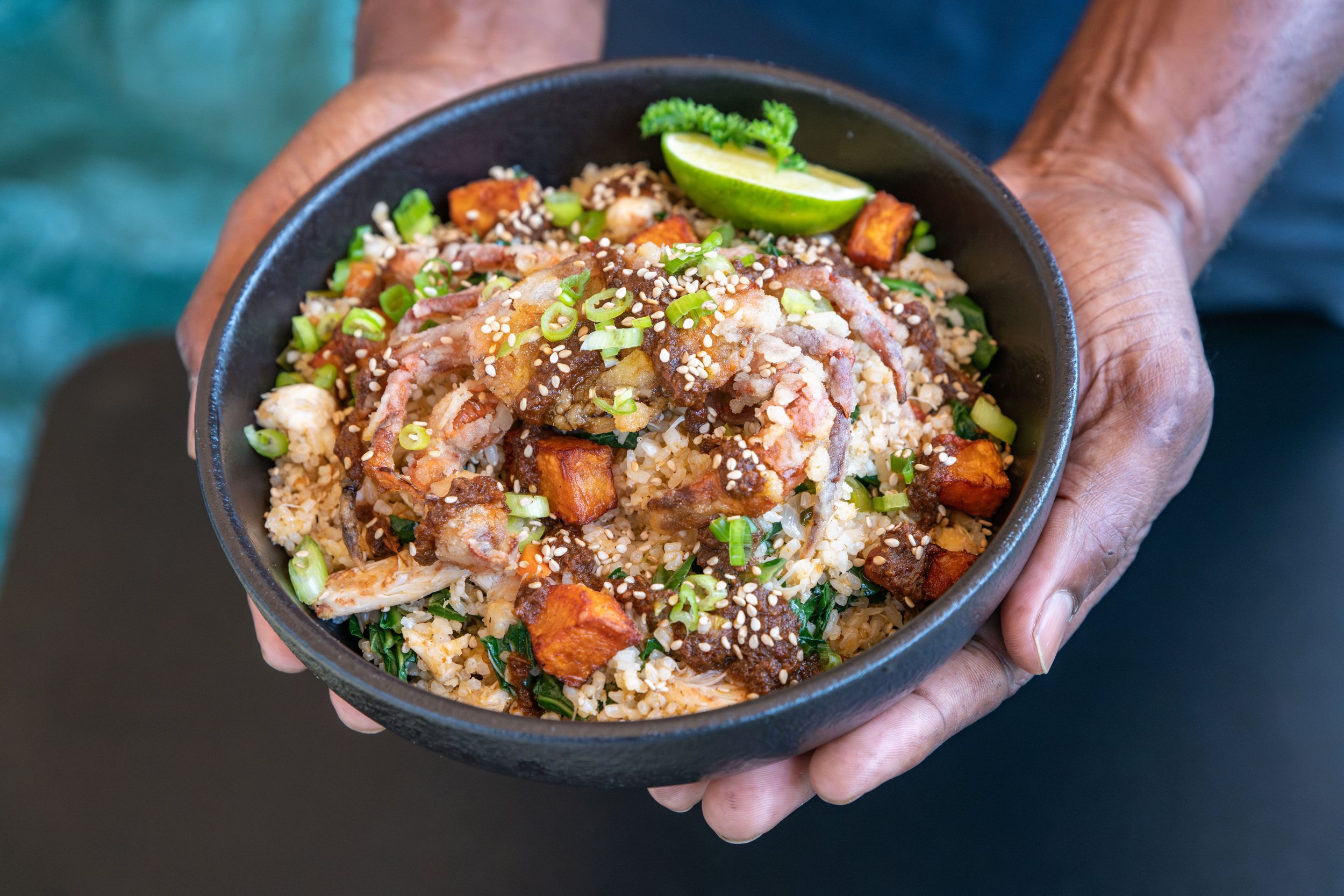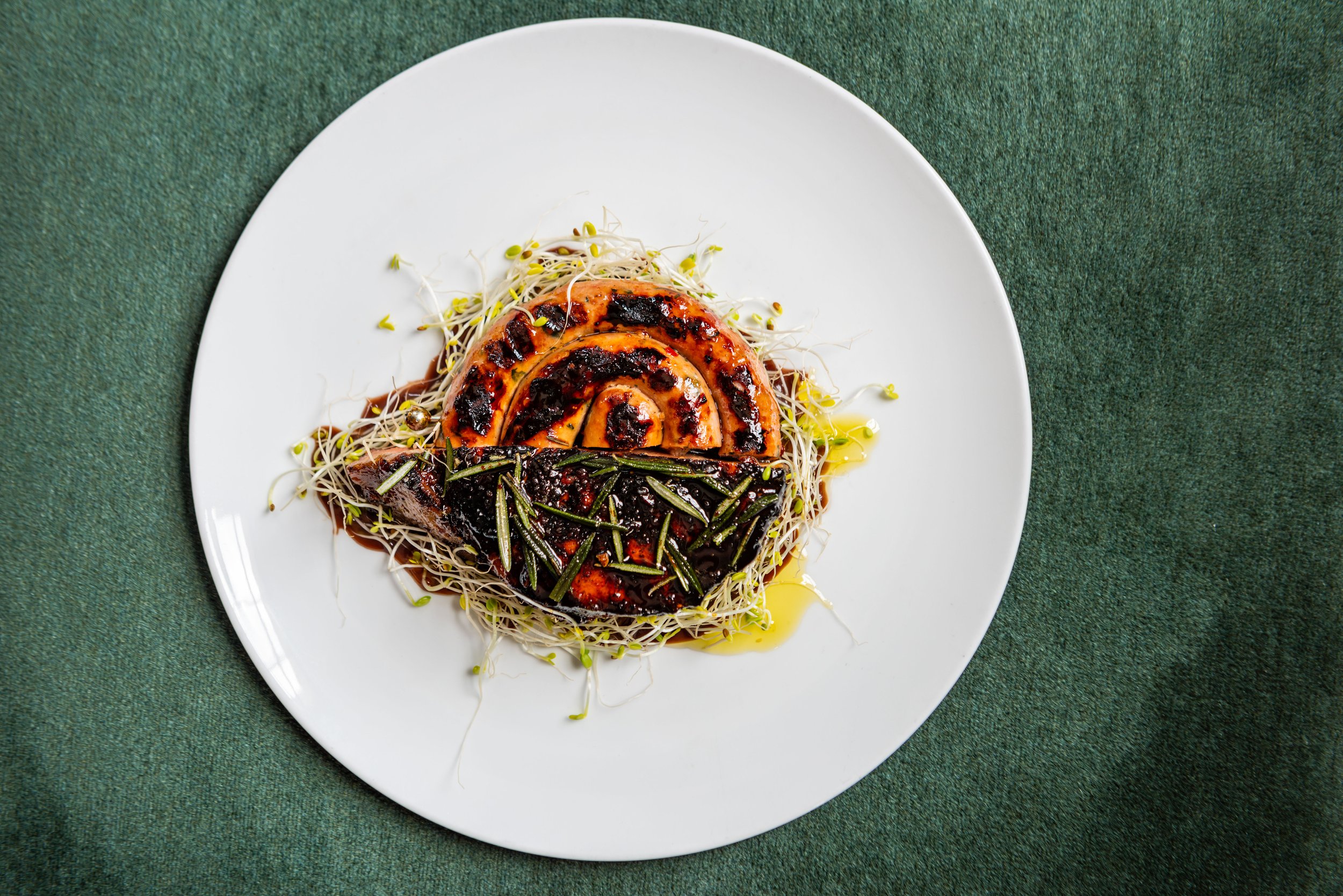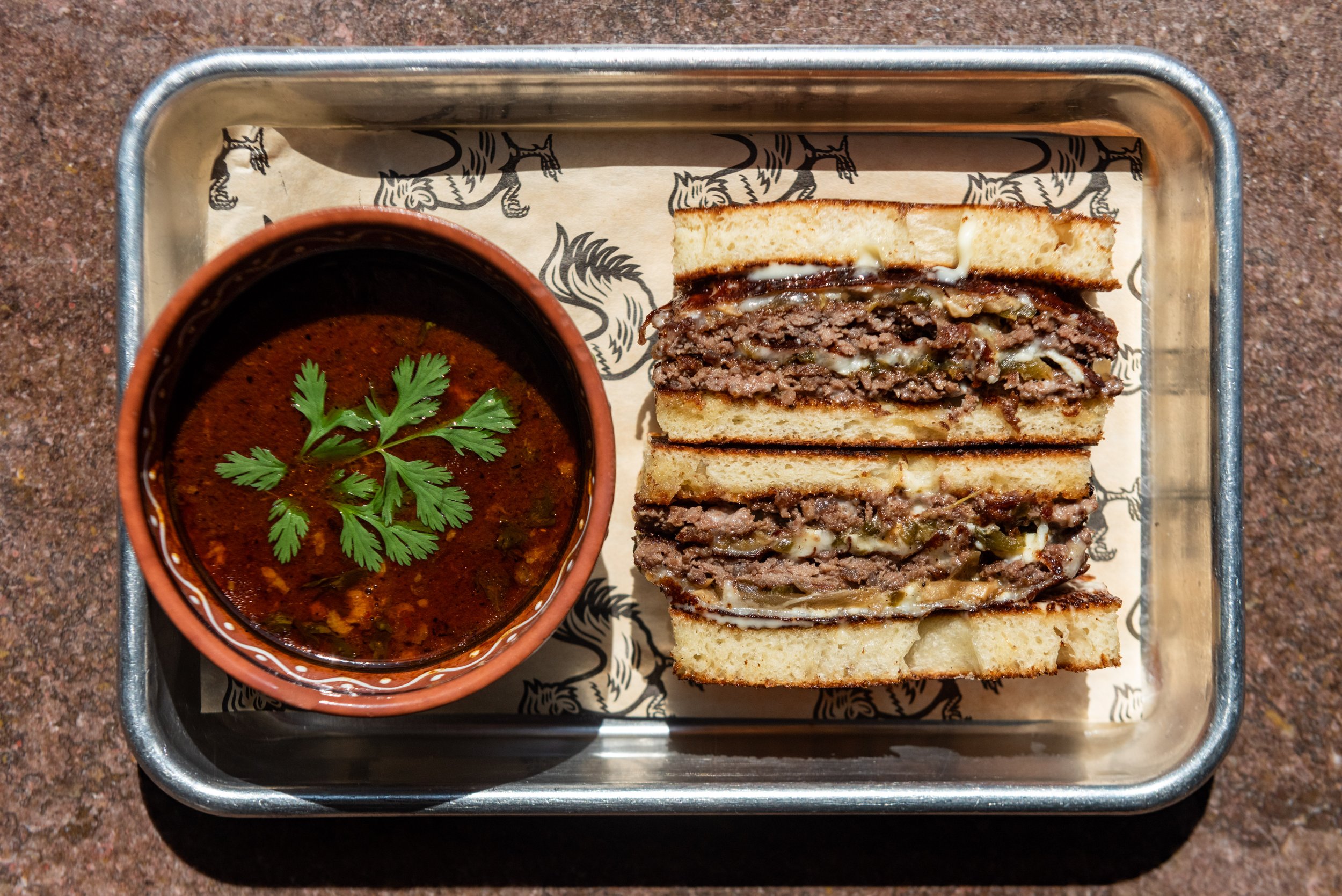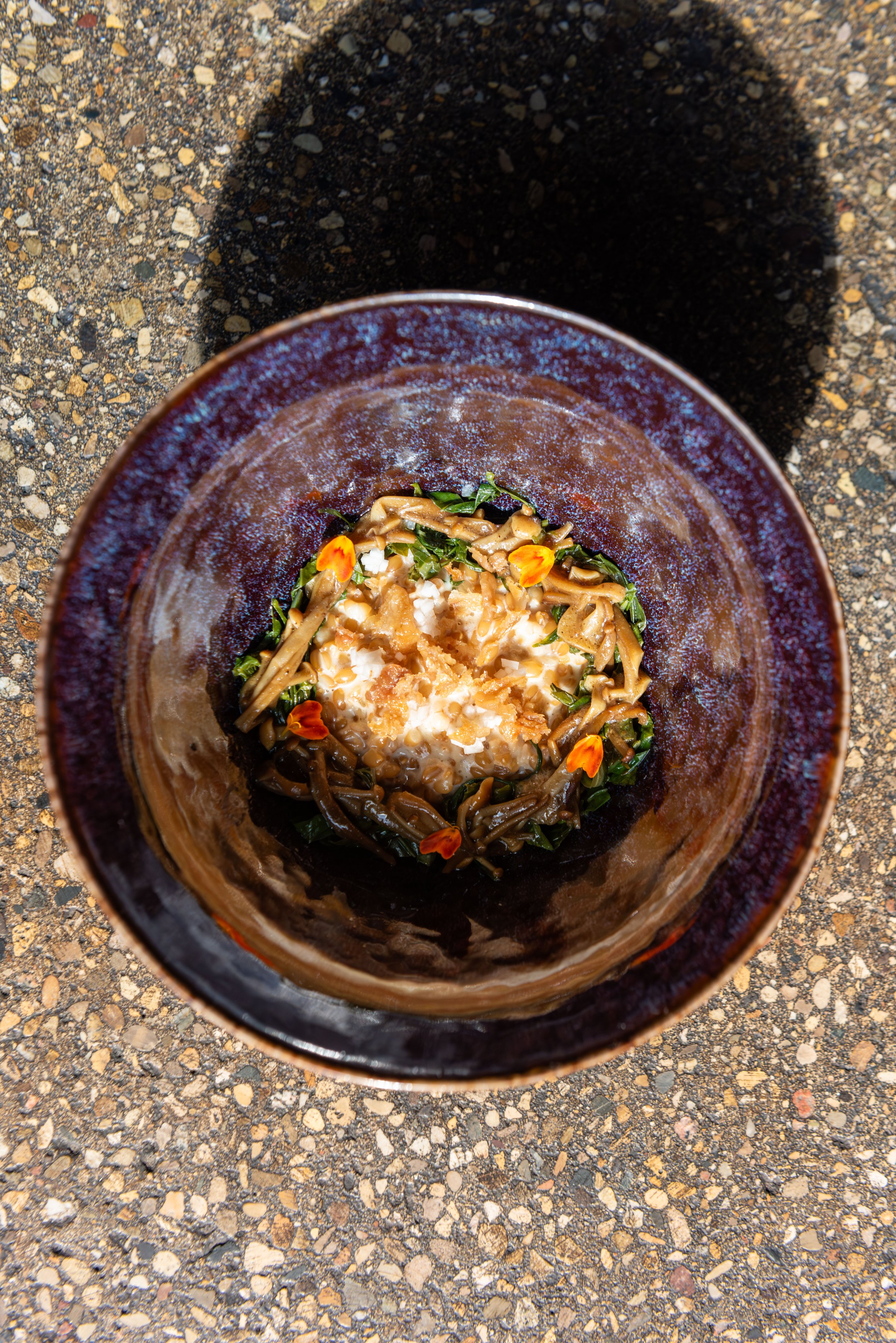Maximizing Ingredients at Audrey
Chef Colby Rasavong and Fermentation Lab Manager Elliot Silber work simultaneously to serve the last of the African runner peanuts to as many guests as possible.
When Audrey’s Chef de Cuisine Colby Rasavong and R&D and Lab Manager Elliot Silber discovered that they were working with the last of the African runner peanuts, they got to work as usual—starting at opposite ends and meeting in the middle.
R&D and lab manager elliot silber | PHOTOS: WILL BLUNT
The heirloom African runner peanuts were initially brought to America by enslaved West Africans, becoming an important food crop for Black families in The South during the 19th century. The plant was thought to be extinct, until Food Historian Dr. David Shields revived them—discovering them in a seed saving vault at North Carolina State University. In the last decade, farmers like Nat Bradford have grown thousands of African runner peanuts. But now, as the last person to commercially grow them, Bradford has distributed his final batch.
"Peanuts are a hard thing to grow, especially the African runners,” says Rasavong. Not only do farmers need to get on their hands and knees to harvest them, but they also don’t do well with competition—they need their own space to grow properly. “When I found out this was the last of them, I had to get them on the menu.” So how does one work with such a precious ingredient? “Very carefully,” says Silber. Not only was the recipe-and-development process about extracting the peanuts’ distinct earthy-sweet flavor—it was a mission to serve the peanuts to as many people as possible. Waste was not an option.
Audrey’s kitchen and the fermentation-forward lab operate in tandem—a carefully choreographed routine by both chefs so that all elements of a dish are ready in time. "The tricky part is that we have to kind of work at the same time, but separately, because all of my stuff takes days and weeks," Silber says. “So if he comes up with an idea for the finished dish and says ‘I just need one more little thing,’ it [may] take me two weeks to make that one little thing.”
Koji grown on african runner peanuts
African runner peanut liquid shio koji
Rasavong decides what seasonal ingredients would pair well with the African runners. This late-winter, it was Ora King salmon, poached turnips, and lovage. “The fat [of the salmon] balances out the fat of the peanuts so well,” says Rasavong. Meanwhile, Silber looks at all of the levers he can pull to accentuate the key flavors of the dish. “I gotta make as many peanut things and as many turnip things as I can, [so] by the time he's done his R&D, I have the salt replacer, the acid replacer, that umami booster, or whatever the dish might need, without me even knowing what he needs yet."
Silber grills the African runners over hickory embers, then processes them through an oil press to make a grilled peanut oil that seasons a creamy house-made peanut milk, along with Rasavong’s turnip green juice. He grows koji on a case-full of peeled peanuts, allowing the peanut koji to be used for future ferments. He simmers all of the peanut scraps and skins and adds rice koji to make a liquid amino that can act as a salt replacement for Rasavong’s dish. “Instead of seasoning it with soy sauce or miso, we season it with more peanuts,” says Silber. In addition to capturing the aromas and flavors of seasonal ingredients, Silber’s goal is to “replace the seasoning pantry with food we’re [already] serving.” Same goes for the turnips. “Instead of seasoning a turnip with white wine vinegar, you would season it with sour turnip juice—a lacto-fermented turnip.”
hickory-grilled ora king salmon, poached turnips, african runner peanut milk, turnip green juice, and grilled peanut oil
Even after Rasavong’s dish hits the Audrey menu, it continues to evolve. “If he says, ‘I'm missing this little touch. ‘I'm missing a vinegar,’ ‘I'm missing a little salt,’ ‘or something a little complex,’ I try to fill in the gap.” Whatever is missing, Silber tries to meet that need while stocking the lab’s larder with more and more seasonings and fermented ingredients.
No matter how far along the dish has come, Rasavong needs it to be clean, familiar, and vibrant. “Vibrancy is something we look for all the time,” he says. “When things are plucked from the ground, they're so vibrant, but when you have them sit around, it loses some of that.” African runner peanuts are vibrant as ever, poured beneath the buttery, ember-grilled salmon fillet—a roasty sweetness that counterbalances the sharp, grassy turnip green juice.
A year from now, Silber anticipates a stocked arsenal of seasonings made from preserved ingredients. The African runner peanuts will continue to live on in Audrey’s pantry for as long as possible, changing form, shape, and flavor on the daily. “That's the ethos of Audrey,” says Silber. “Everything is always in development.”


